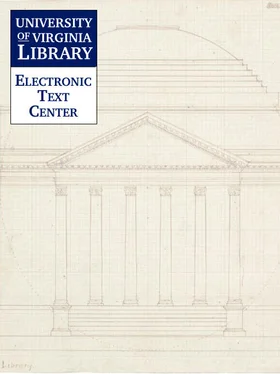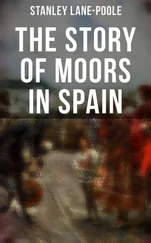Hendrik Loon - The Story of Mankind
Здесь есть возможность читать онлайн «Hendrik Loon - The Story of Mankind» весь текст электронной книги совершенно бесплатно (целиком полную версию без сокращений). В некоторых случаях можно слушать аудио, скачать через торрент в формате fb2 и присутствует краткое содержание. Год выпуска: 2000, Издательство: Electronic Text Center. University of Virginia Library., Жанр: Старинная литература, на английском языке. Описание произведения, (предисловие) а так же отзывы посетителей доступны на портале библиотеки ЛибКат.
- Название:The Story of Mankind
- Автор:
- Издательство:Electronic Text Center. University of Virginia Library.
- Жанр:
- Год:2000
- ISBN:нет данных
- Рейтинг книги:3 / 5. Голосов: 1
-
Избранное:Добавить в избранное
- Отзывы:
-
Ваша оценка:
- 60
- 1
- 2
- 3
- 4
- 5
The Story of Mankind: краткое содержание, описание и аннотация
Предлагаем к чтению аннотацию, описание, краткое содержание или предисловие (зависит от того, что написал сам автор книги «The Story of Mankind»). Если вы не нашли необходимую информацию о книге — напишите в комментариях, мы постараемся отыскать её.
The Story of Mankind — читать онлайн бесплатно полную книгу (весь текст) целиком
Ниже представлен текст книги, разбитый по страницам. Система сохранения места последней прочитанной страницы, позволяет с удобством читать онлайн бесплатно книгу «The Story of Mankind», без необходимости каждый раз заново искать на чём Вы остановились. Поставьте закладку, и сможете в любой момент перейти на страницу, на которой закончили чтение.
Интервал:
Закладка:
But by this time, his own art, which he had brought with him from the east, had developed into something very beautiful and he made up for his past neglect and indifference by the so- called ``art of the Middle Ages'' which as far as northern Europe is concerned was a product of the Germanic mind and had borrowed but little from the Greeks and the Latins and nothing at all from the older forms of art of Egypt and Assyria, not to speak of India and China, which simply did not exist, as far as the people of that time were concerned. Indeed, so little had the northern races been influenced by their southern neighbours that their own architectural products were completely misunderstood by the people of Italy and were treated by them with downright and unmitigated contempt.
You have all heard the word Gothic. You probably associate it with the picture of a lovely old cathedral, lifting its slender spires towards high heaven. But what does the word really mean?
It means something ``uncouth'' and ``barbaric''--something which one might expect from an ``uncivilised Goth,'' a rough backwoods-man who had no respect for the established rules of classical art and who built his ``modern horrors'' to please his own low tastes without a decent regard for the examples of the Forum and the Acropolis.
And yet for several centuries this form of Gothic architecture was the highest expression of the sincere feeling for art which inspired the whole northern continent. From a previous chapter, you will remember how the people of the late Middle Ages lived. Unless they were peasants and dwelt in villages, they were citizens of a ``city'' or ``civitas,'' the old Latin name for a tribe. And indeed, behind their high walls and their deep moats, these good burghers were true tribesmen who shared the common dangers and enjoyed the common safety and prosperity which they derived from their system of mutual protection.
In the old Greek and Roman cities the market-place, where the temple stood, had been the centre of civic life. During the Middle Ages, the Church, the House of God, became such a centre. We modern Protestant people, who go to our church only once a week, and then for a few hours only, hardly know what a mediæval church meant to the community. Then, before you were a week old, you were taken to the Church to be baptised. As a child, you visited the Church to learn the holy stories of the Scriptures. Later on you became a member of the congregation, and if you were rich enough you built yourself a separate little chapel sacred to the memory of the Patron Saint of your own family. As for the sacred edifice, it was open at all hours of the day and many of the night. In a certain sense it resembled a modern club, dedicated to all the inhabitants of the town. In the church you very likely caught a first glimpse of the girl who was to become your bride at a great ceremony before the High Altar. And finally, when the end of the journey had come, you were buried beneath the stones of this familiar building, that all your children and their grandchildren might pass over your grave until the Day of Judgement.
Because the Church was not only the House of God but also the true centre of all common life, the building had to be different from anything that had ever been constructed by the hands of man. The temples of the Egyptians and the Greeks and the Romans had been merely the shrine of a local divinity. As no sermons were preached before the images of Osiris or Zeus or Jupiter, it was not necessary that the interior offer space for a great multitude. All the religious processions of the old Mediterranean peoples took place in the open. But in the north, where the weather was usually bad, most functions were held under the roof of the church.
During many centuries the architects struggled with this problem of constructing a building that was large enough. The Roman tradition taught them how to build heavy stone walls with very small windows lest the walls lose their strength. On the top of this they then placed a heavy stone roof. But in the twelfth century, after the beginning of the Crusades, when the architects had seen the pointed arches of the Mohammedan builders, the western builders discovered a new style which gave them their first chance to make the sort of building which those days of an intense religious life demanded. And then they developed this strange style upon which the Italians bestowed the contemptuous name of ``Gothic'' or barbaric. They achieved their purpose by inventing a vaulted roof which was supported by ``ribs.'' But such a roof, if it became too heavy, was apt to break the walls, just as a man of three hundred pounds sitting down upon a child's chair will force it to collapse. To overcome this difficulty, certain French architects then began to re-enforce the walls with ``buttresses'' which were merely heavy masses of stone against which the walls could lean while they supported the roof. And to assure the further safety of the roof they supported the ribs of the roof by so-called ``flying buttresses,'' a very simple method of construction which you will understand at once when you look at our picture.
This new method of construction allowed the introduction of enormous windows. In the twelfth century, glass was still an expensive curiosity, and very few private buildings possessed glass windows. Even the castles of the nobles were without protection and this accounts for the eternal drafts and explains why people of that day wore furs in-doors as well as out.
Fortunately, the art of making coloured glass, with which the ancient people of the Mediterranean had been familiar, had not been entirely lost. There was a revival of stained glass-making and soon the windows of the Gothic churches told the stories of the Holy Book in little bits of brilliantly coloured window-pane, which were caught in a long framework of lead.
Behold, therefore, the new and glorious house of God, filled with an eager multitude, ``living'' its religion as no people have ever done either before or since! Nothing is considered too good or too costly or too wondrous for this House of God and Home of Man. The sculptors, who since the destruction of the Roman Empire have been out of employment, haltingly return to their noble art. Portals and pillars and buttresses and cornices are all covered with carven images of Our Lord and the blessed Saints. The embroiderers too are set to work to make tapestries for the walls. The jewellers offer their highest art that the shrine of the altar may be worthy of complete adoration. Even the painter does his best. Poor man, he is greatly handicapped by lack of a suitable medium.
And thereby hangs a story.
The Romans of the early Christian period had covered the floors and the walls of their temples and houses with mosaics; pictures made of coloured bits of glass. But this art had been exceedingly difficult. It gave the painter no chance to express all he wanted to say, as all children know who have ever tried to make figures out of coloured blocks of wood. The art of mosaic painting therefore died out during the late Middle Ages except in Russia, where the Byzantine mosaic painters had found a refuge after the fall of Constantinople and continued to ornament the walls of the orthodox churches until the day of the Bolsheviki, when there was an end to the building of churches.
Of course, the mediæval painter could mix his colours with the water of the wet plaster which was put upon the walls of the churches. This method of painting upon ``fresh plaster'' (which was generally called ``fresco'' or ``fresh'' painting) was very popular for many centuries. To-day, it is as rare as the art of painting miniatures in manuscripts and among the hundreds of artists of our modern cities there is perhaps one who can handle this medium successfully. But during the Middle Ages there was no other way and the artists were ``fresco'' workers for lack of something better. The method however had certain great disadvantages. Very often the plaster came off the walls after only a few years, or dampness spoiled the pictures, just as dampness will spoil the pattern of our wall paper. People tried every imaginable expedient to get away from this plaster background. They tried to mix their colours with wine and vinegar and with honey and with the sticky white of egg, but none of these methods were satisfactory. For more than a thousand years these experiments continued. In painting pictures upon the parchment leaves of manuscripts the mediæval artists were very successful. But when it came to covering large spaces of wood or stone with paint which would stick, they did not succeed very well.
Читать дальшеИнтервал:
Закладка:
Похожие книги на «The Story of Mankind»
Представляем Вашему вниманию похожие книги на «The Story of Mankind» списком для выбора. Мы отобрали схожую по названию и смыслу литературу в надежде предоставить читателям больше вариантов отыскать новые, интересные, ещё непрочитанные произведения.
Обсуждение, отзывы о книге «The Story of Mankind» и просто собственные мнения читателей. Оставьте ваши комментарии, напишите, что Вы думаете о произведении, его смысле или главных героях. Укажите что конкретно понравилось, а что нет, и почему Вы так считаете.












